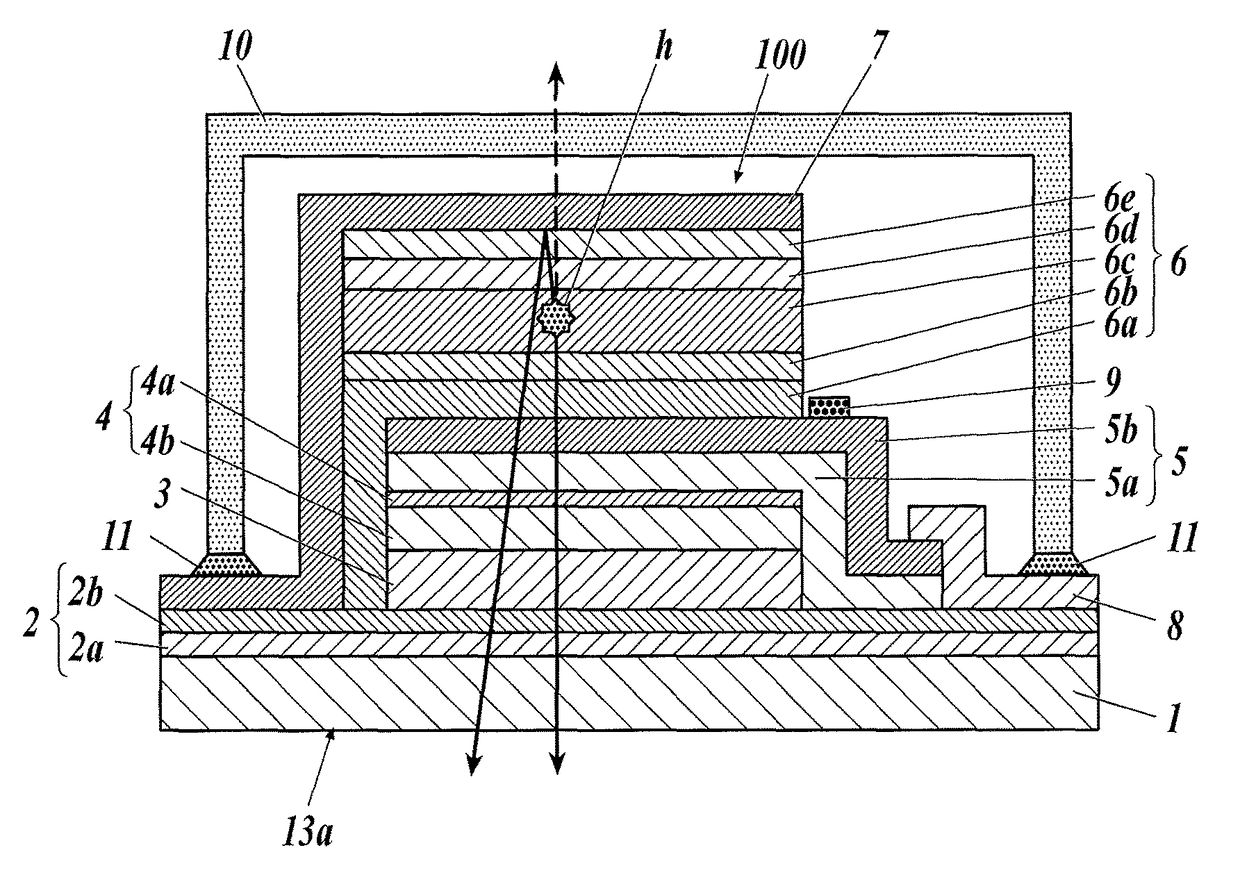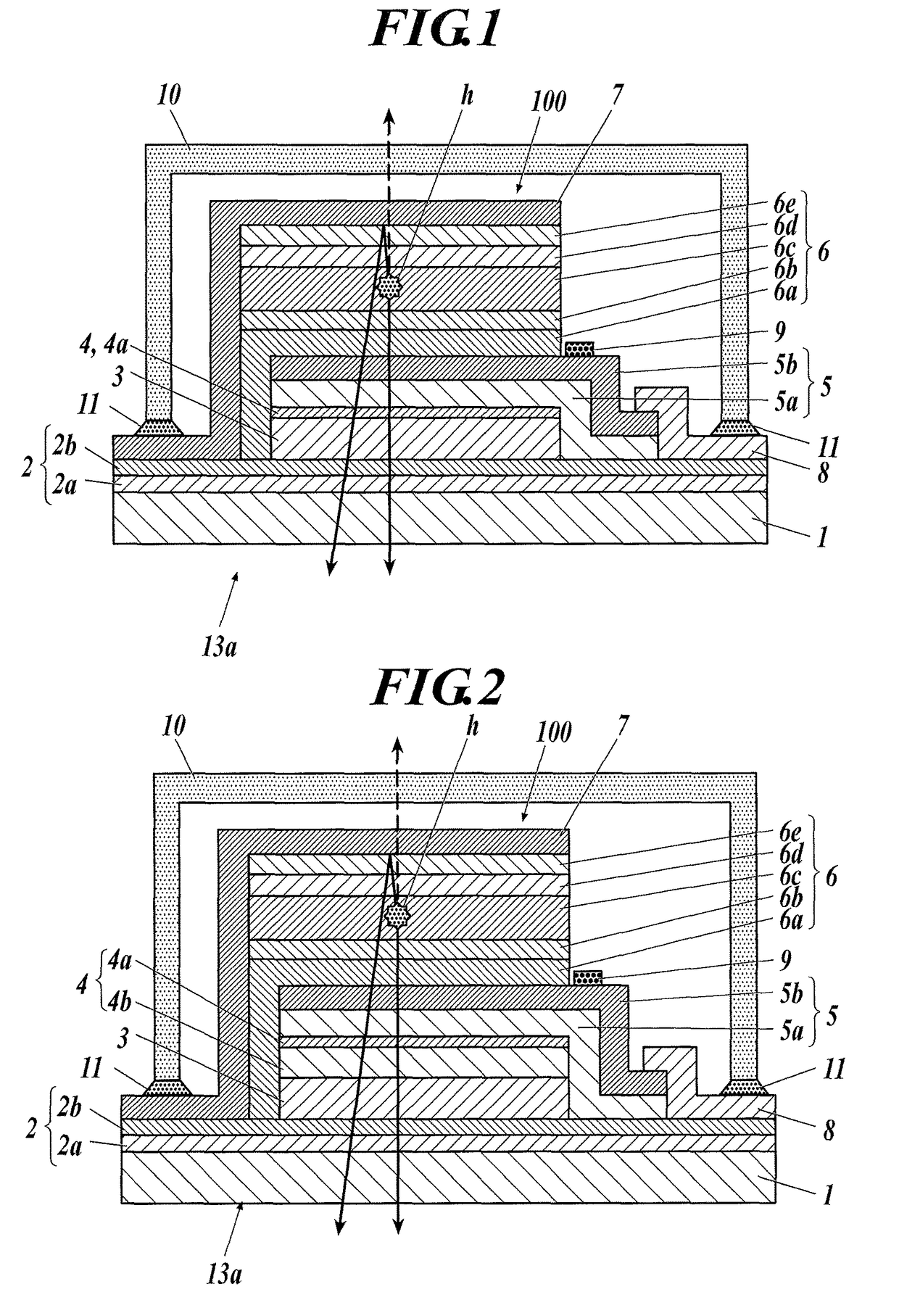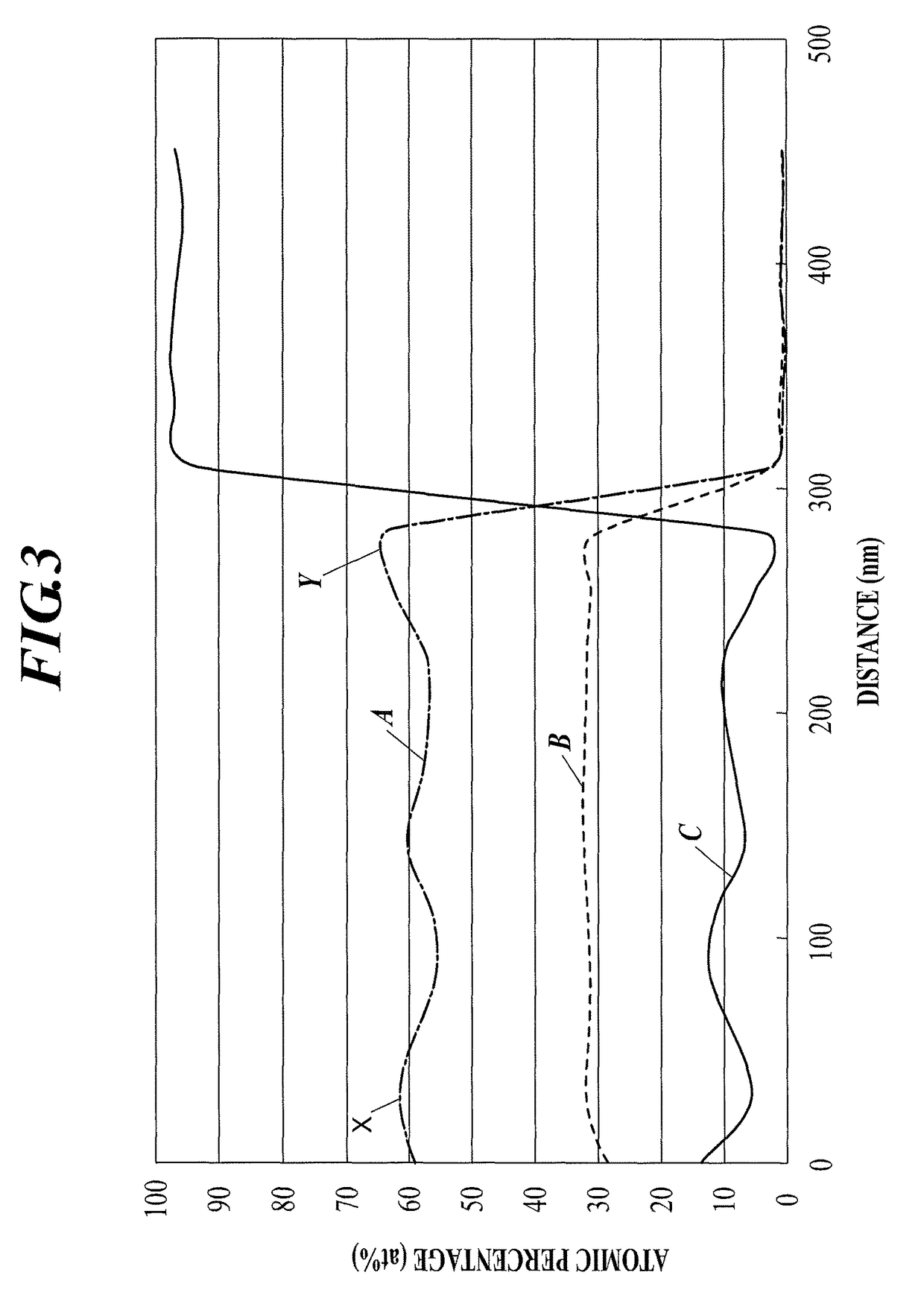Organic electroluminescence element
a technology of electroluminescent elements and organic materials, which is applied in the direction of organic semiconductor devices, electrical devices, semiconductor devices, etc., can solve the problems of uneven surface appearance, poor gas barrier property of transparent plastics compared to glass substrates, and uneven function of electronic devices, so as to improve light-emission efficiency, high-temperature storage stability, and maintain flexible aptitud
- Summary
- Abstract
- Description
- Claims
- Application Information
AI Technical Summary
Benefits of technology
Problems solved by technology
Method used
Image
Examples
examples
[0455]Hereafter, the present invention will be described specifically by referring to examples, however, the present invention is not limited to them. In examples, the term “%” is used. Unless particularly mentioned, it represents “mass %”.
>
(1) Preparation of Substrate 1
(1-1) Film Substrate
[0456]A biaxially oriented polyethylene naphthalate film (PEN film having a thickness of 100 μm and a width of 350 mm, Neotex™ Q65FA made by Teijin DuPont Films Co. Ltd.) was used as a film substrate.
(1-2) Preparation of Primer Layer
[0457]In the subsequent step, an UV-curable organic / inorganic hybrid hard coat material OPSTAR Z7501 was applied with a wire bar to an easy-adhesion surface of the film substrate to obtain a coated layer with a dry thickness of 4 μm. Then, the layer was dried at 80° C. for three minutes, and was cured with a high pressure mercury lamp at 1.0 J / cm2 under an air atmosphere to form a primer layer.
[0458]The maximum cross-section height Ra (p) that indicates the surface rou...
PUM
 Login to View More
Login to View More Abstract
Description
Claims
Application Information
 Login to View More
Login to View More - R&D
- Intellectual Property
- Life Sciences
- Materials
- Tech Scout
- Unparalleled Data Quality
- Higher Quality Content
- 60% Fewer Hallucinations
Browse by: Latest US Patents, China's latest patents, Technical Efficacy Thesaurus, Application Domain, Technology Topic, Popular Technical Reports.
© 2025 PatSnap. All rights reserved.Legal|Privacy policy|Modern Slavery Act Transparency Statement|Sitemap|About US| Contact US: help@patsnap.com



